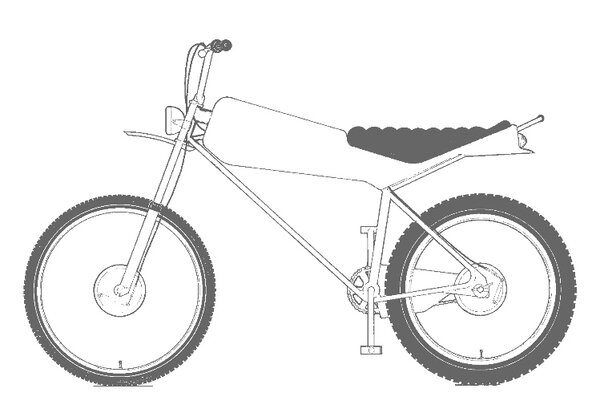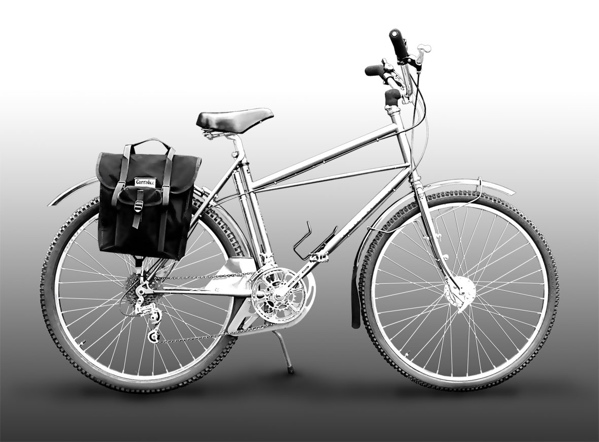swizz69 wrote:
swizz69 wrote: And Geoff, great bike & a fascinating history. I''m surprised the concept of such a machine hasn't already found a market in the same way Pashleys bikes do for a small segment of the marketplace. It looks like a discerning machine well suited to those who don't wish to rush anywhere - but get literally 'wherever' if that makes any sense. A lot of function rather than fashion.
I believe the reason why Geoff's design never took up its rightful place as an alternative approach to off-road cycling is mainly down to two things.
1/ 1983-4, when Geoff marketed his designs was simply too early and he didn't have the financial resources or backing to fight for a place in the emerging market.
2/ Geoff's solution, the result of years of testing, wasn't understood by the people who saw his bikes. (This included me). Aesthetically, people related drop handlebars and no mudguards with cycle sport, modernity and speed. Geoff’s bikes had too many design cues from an older and more practical age of cycling.
Though Geoff's bikes share many of the same characteristics as Mountain Bikes, they never shared the same purpose or ethos. The modern Mountain Bike, with its low riding position and suspension has moved the two concepts even further apart. I love both equally. However, they sit at opposite ends of the same spectrum.
The Cleland design is more concerned with reliability and being able to ride across extremely challenging terrain, than racing and speed.
They also have a high comfort and low maintenance philosophy. They can be toured for days on end in wet and muddy conditions without the usual problems: discomfort, muddy clothes, mud induced breakdowns, wheel clogging etc.
Clelands are great fun. They are like a massive 650b wheeled BMX's they allow the rider to use the rider to utilise their body weight in a very BMX manner. They will perform tricks that are impossible my modern Giant NRS Carbon, and vice versa.
The upright riding position gives the impression that they are slow, in fact, in the right conditions they can move extremely swiftly. Their tyre pressures are run very low as an extremely efficient form of high frequency suspension. This gives each of them a footprint of up to 12 square inches and makes them very fast on soft ground. I changed bikes from my FW Evans ATB (Ritchey copy made by Saracen), to a Cleland, back in 1985 because on the Evans, I found it difficult to keep up.
I continue to ride my Clelands because they’re capable, reliable and fun, not because they're old and rare.
If the mainstream MTBs are the rally cars of the bicycle world then the Clelands are the tractors. It’s about time that someone started making them again, there must be a market for people who want to ride off-road in comfort, with a straight back and an unrestricted view of the countryside around them.
![spock[1].jpg](/data/attachments/23/23482-2dfcc741ea31e63da827063bb8f667ec.jpg)

